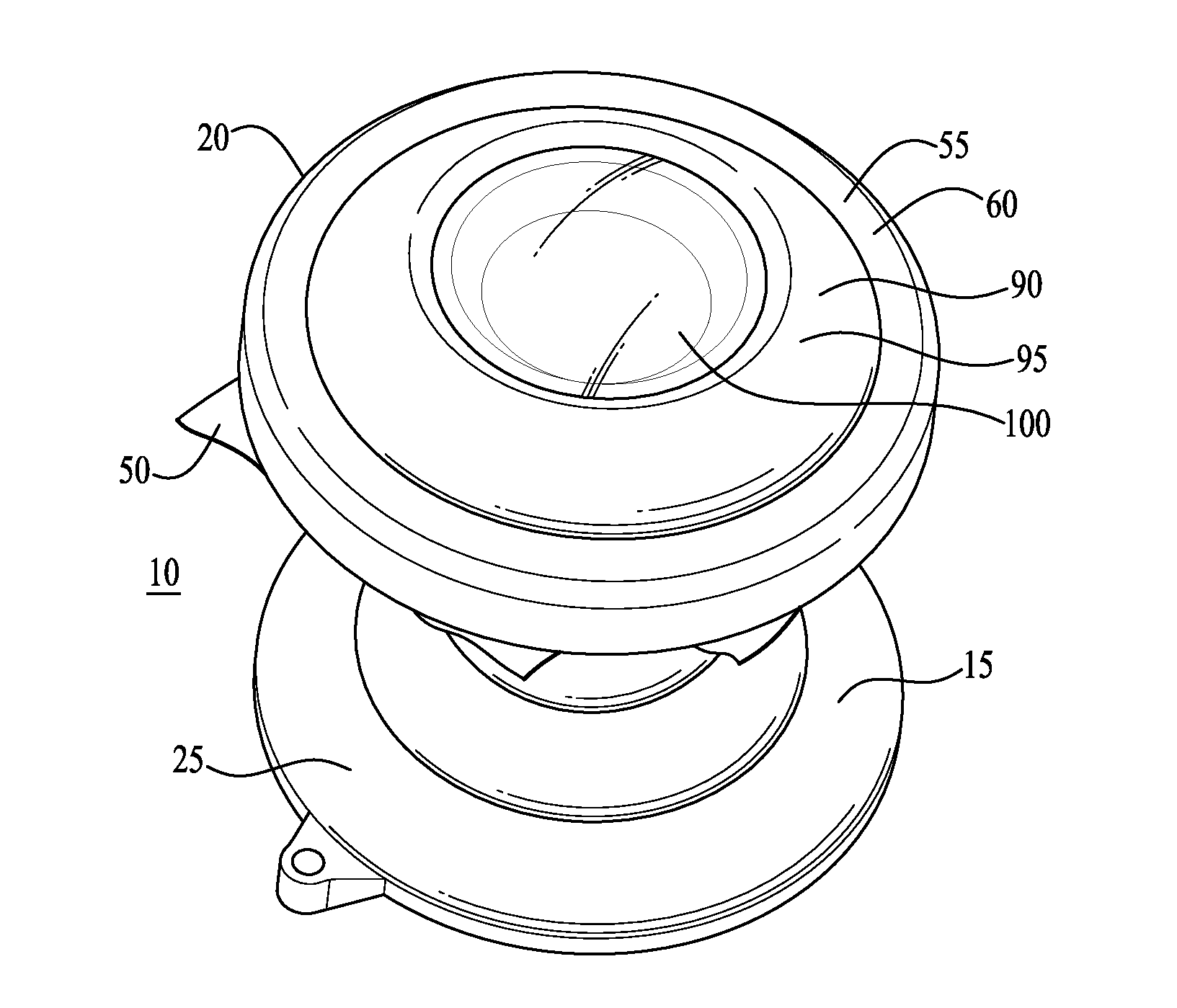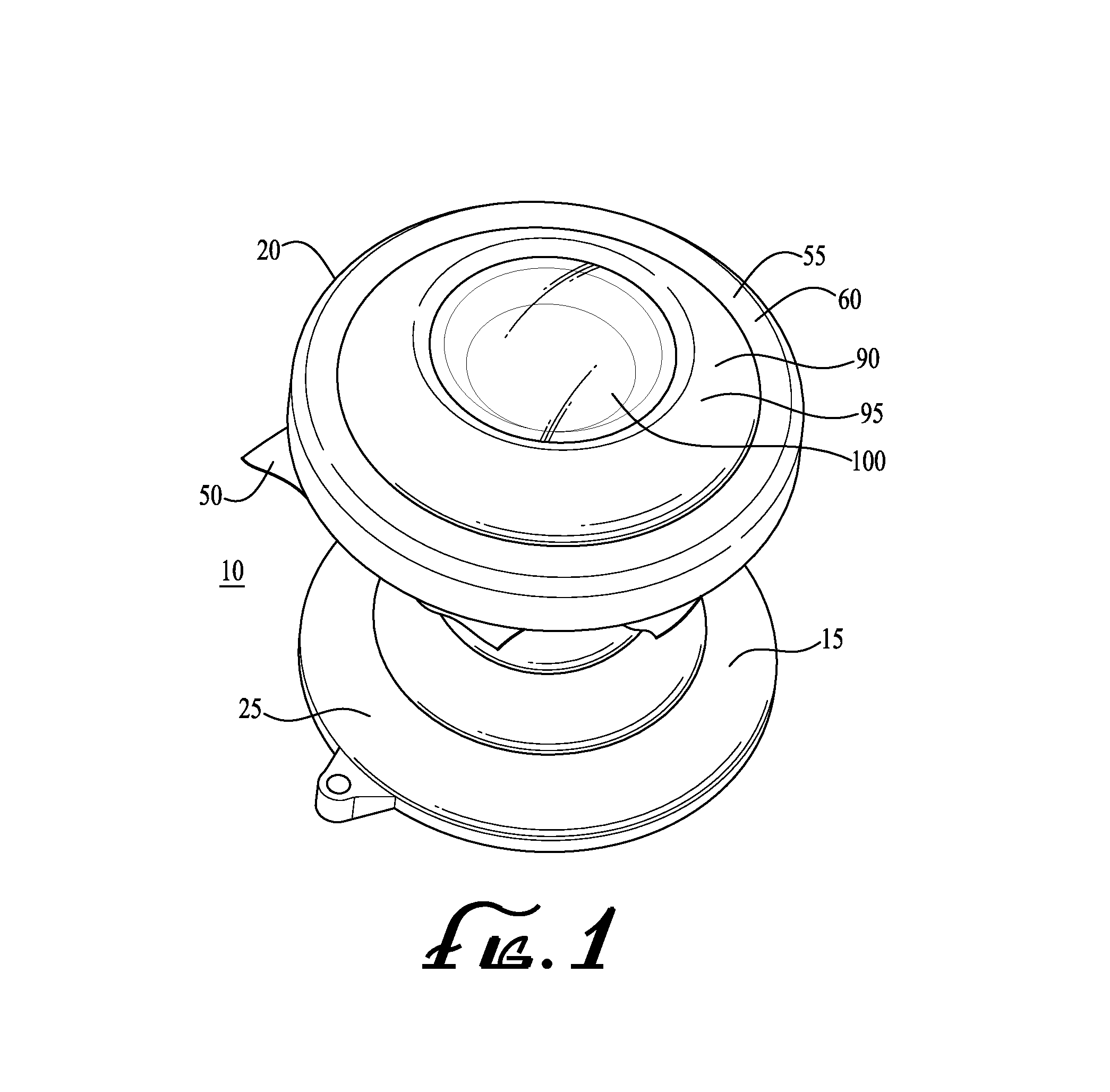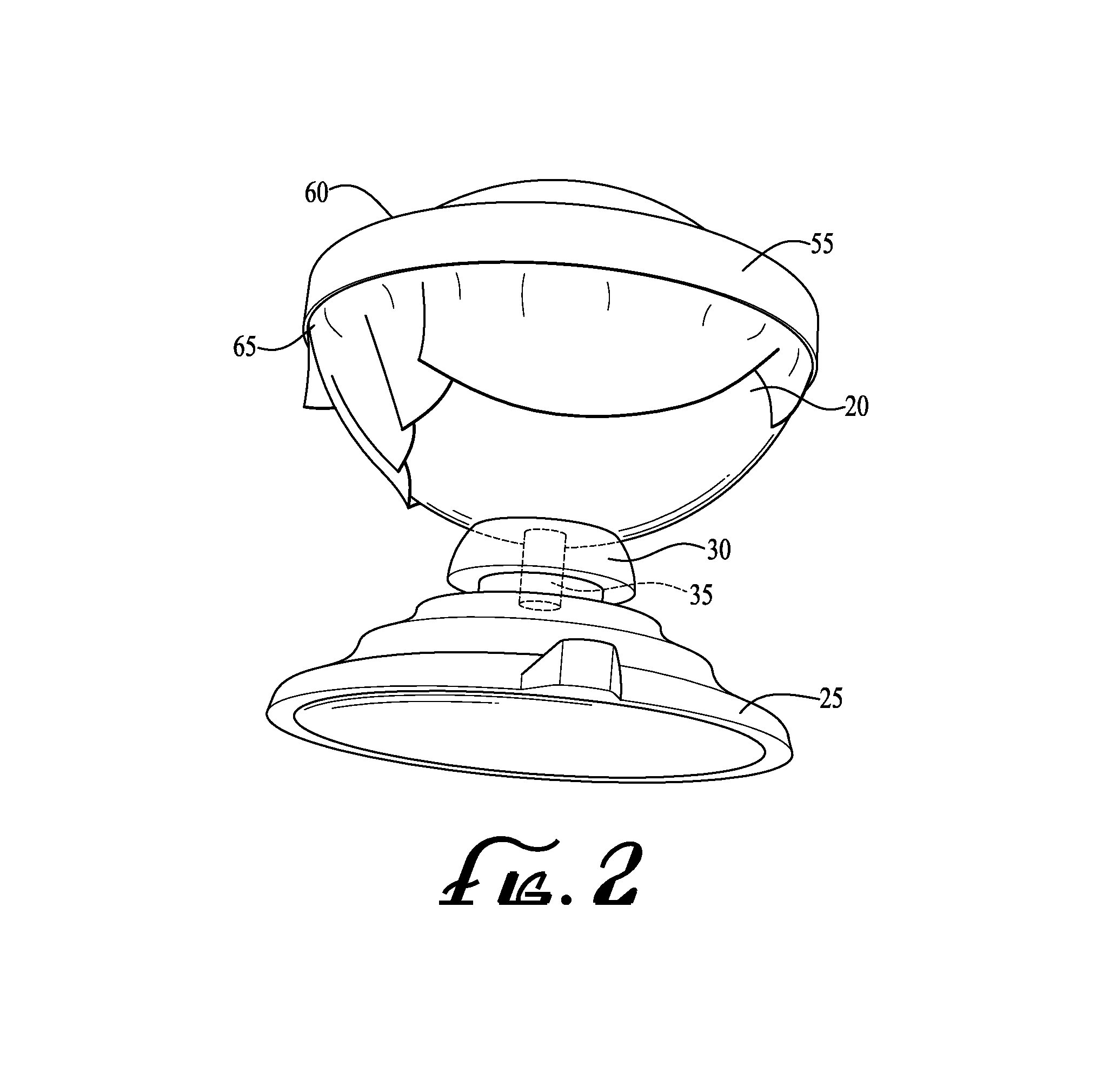Apparatus for practicing ophthalmologic surgical techniques
- Summary
- Abstract
- Description
- Claims
- Application Information
AI Technical Summary
Benefits of technology
Problems solved by technology
Method used
Image
Examples
Embodiment Construction
[0050]As shown in FIG. 1-6, there is an improvement to the apparatus for teaching and practicing an ophthalmologic surgical technique of creating the continuous curvilinear capsulorhexis (“CCC”) and comprises a housing with a first base end and a second end (suction cup) for holding a gel or putty-like malleable body to mimic the human lens anatomy; said malleable body is covered by a flexible and removable polyester film or cellophane-type film (which mimics the anterior lens capsule); between the first base end and the second suction cup end, there can be a stock or body; this stock or body can also have a piston or strut mechanism or another mechanism to increase the pressure within the housing to push the malleable body upwards; and on the first base end, there can be a first cap and a second cap.
Housing
[0051]As shown in FIG. 1-6, there is a housing with a first housing (or base) end and a second housing (or base) end (suction cup end).
First Housing End: First Base End
[0052]The ...
PUM
 Login to view more
Login to view more Abstract
Description
Claims
Application Information
 Login to view more
Login to view more - R&D Engineer
- R&D Manager
- IP Professional
- Industry Leading Data Capabilities
- Powerful AI technology
- Patent DNA Extraction
Browse by: Latest US Patents, China's latest patents, Technical Efficacy Thesaurus, Application Domain, Technology Topic.
© 2024 PatSnap. All rights reserved.Legal|Privacy policy|Modern Slavery Act Transparency Statement|Sitemap



